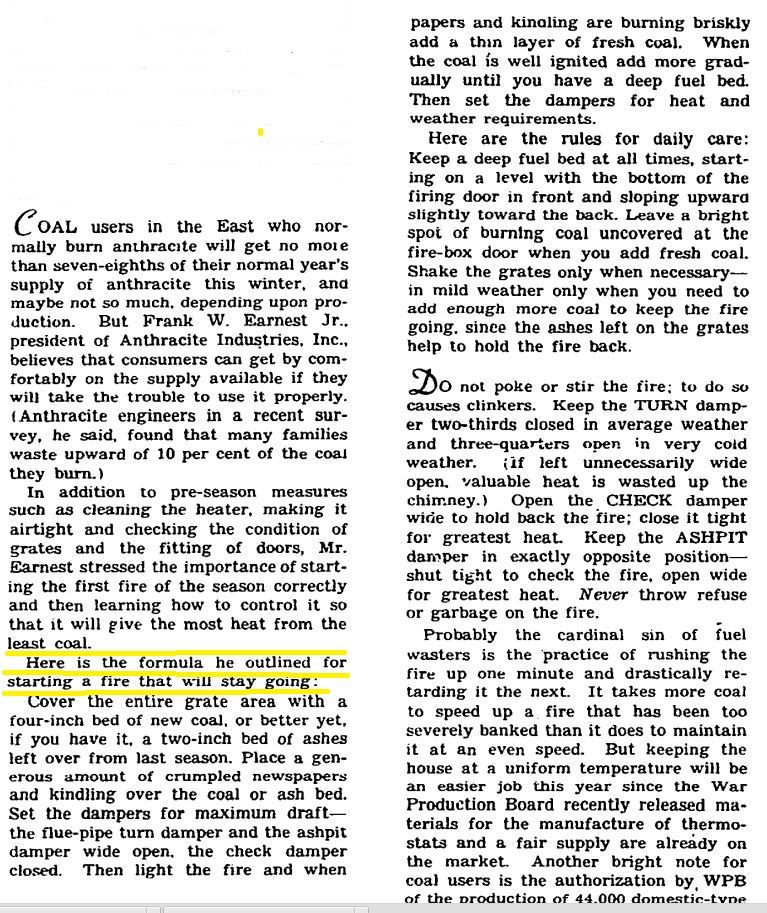tmbrddl wrote:I enjoyed the read but it seemed rather counterintuitive after everything I've learned about burning coal. Put the coal in first and then the kindling on top?
This is a fire building technique that is commonly used with fire pits as well as others. This will keep the hot burning wood off the grates and slow down the draft a bit through the grates. You start the fire and as it's burning you add the coal just like you normally would. IMHO it gives you better control of a start-up fire. Since I read this I tried it with the Oak stove we have on the second floor in the church and it works pretty good. I can get a fire going with less wood, less muss and fuss. It also lites off the base coal and it appears to give you a working fire a bit quicker and with a bit more control. I also tried it with my VC2310 and it worked pretty good.
One Sunday morning when I was lighting the stove using this technique I thought I heard the Oak stove sigh and say "Finally!!" but I can't be sure. It could have been the 100 year old building sighing, moaning, popping and groaning.
Or I just made it all up and am applying the principle of anthropomorphism. This is your word for the day. (I remembered the term but had to look up the spelling.)






